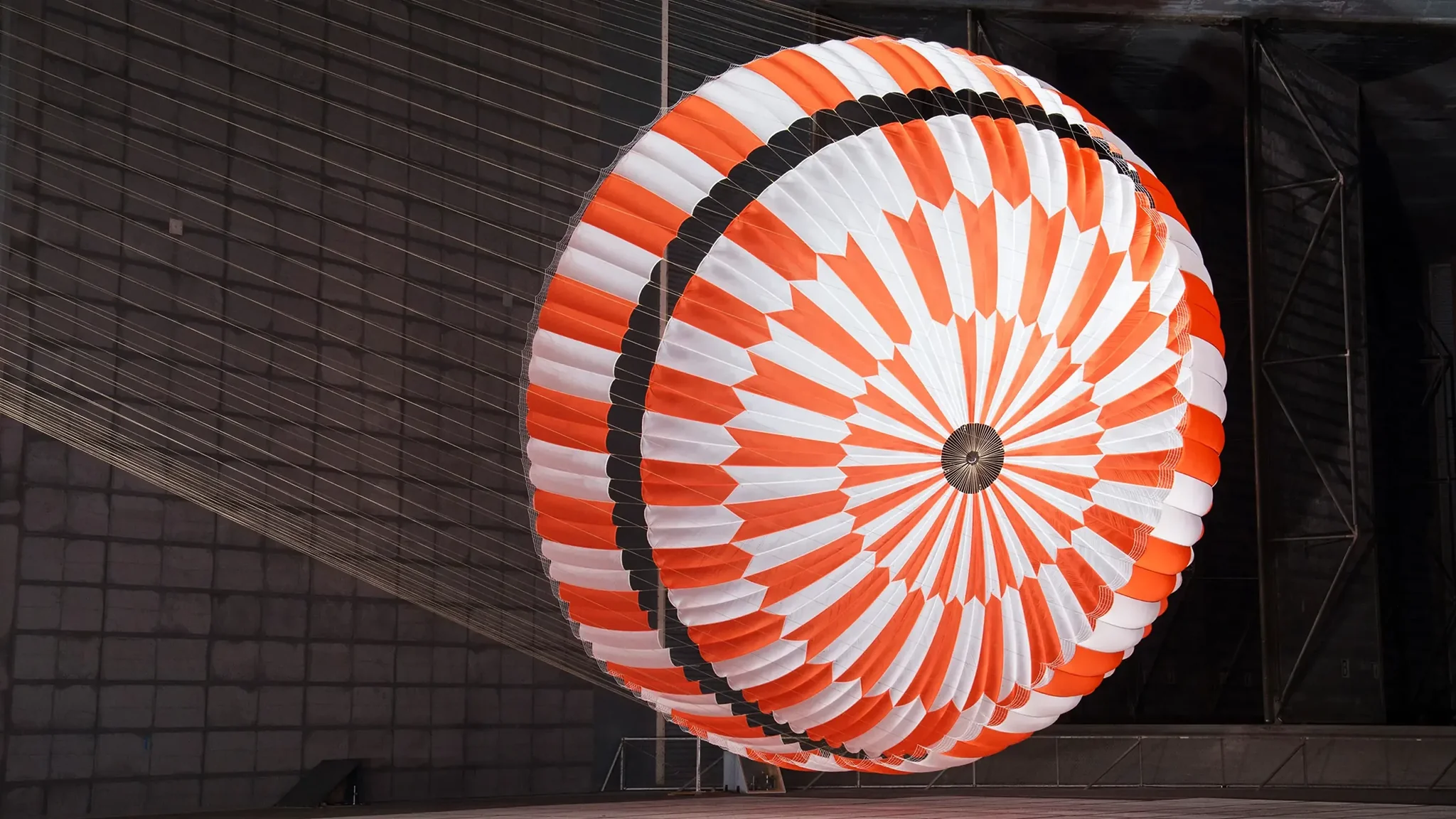Martian Aerogel Jacket - Rover Orange edition
The only part of this jacket you won’t currently find on Mars is the zip.
- Outer shell and lining is made from the same parachutes that landed the last Rover on Mars.
- The parachute is used to slam the brakes on at Mach 16 during the approach to Mars.
- The aerogel insulation is made by the team building the aerogel heat shield for the next Mars Rover.
This entire jacket is built from two materials that count ‘travelling through space’ as their day job. On the inside is a completely new type of aerogel built by the same team making the new aerogel heat shield for the next Mars Rover. Laser-drilled with hundreds of micropores it’s the first aerogel in the world that’s flexible, durable, and waterproof.
Protecting the aerogel is an outer shell built with the only fabric that’s currently on Earth, Mars and Titan – an extreme strength parachute used to land the first probe on Titan and the last Rover on Mars. The jacket’s soft metallic look, black contrast seam taping and zigzag stitching are based on the aluminised nylon and angled zippers of the early Project Mercury spacesuits. And the outer shell is designed with a transparent finish to create a window into the laser-drilled aerogel technology underneath.
Technical Details



Built with the same lab helping land Rovers on Mars
The story of this new aerogel started back in 2019 when one of our customers got in touch. It turned out that he worked with one of the most cutting-edge materials labs on Earth, and they were pushing the boundaries of what’s possible with aerogel. Based in California, AlphaTek Materials develops advanced materials for the aerospace industry. Right now they’re working with NASA on an ultra-high performance aerogel layer designed to protect the next Mars Rover as it bursts through Mars’ atmosphere at 2000°C.







It’s the lightest solid material in the world
To make our aerogel, Alphatek takes silica gel and puts it through an energy efficient process called ambient drying, which slowly extracts the liquid part of the gel without collapsing its structure. What you’re left with is a porous, sponge-like material that’s made up of 99% empty space. It’s why aerogel is only 3x more dense than air and the lightest solid material in the world.




Protecting the aerogel inside this jacket is an outer shell built with the only fabric currently on Earth, Mars and Titan – an extreme strength parachute used to land the first probe on Titan and the last Rover on Mars.





An aerogel hood and a two-way front zipper
The peaked hood is lined with aerogel insulation just like the rest of the jacket and tightens with a cord adjuster at the back. The cuffs tighten with metal snaps to create a seal around your wrists, while the hem can also be tightened with cord adjusters to prevent cold air from getting in at your waist. And the two-way front zipper comes fitted with an oversized pull cord so it’s easy to grab even when you’re wearing thick gloves.





Size + Fit
The Aerogel Jacket is designed with a regular fit.
| Size | XS | S | M | L | XL | XXL |
| Fits chest | 83 - 90 | 91 - 98 | 99 - 106 | 107 - 114 | 115 - 122 | 123 - 130 |
| Fits waist | 71 - 76 | 76 - 81 | 81 - 86 | 86 - 91 | 91 - 96 | 96 - 101 |
| Size | XS | S | M | L | XL | XXL |
| Fits chest | 33 - 36 | 36 - 39 | 39 - 42 | 42 - 45 | 45 - 48 | 48 - 51 |
| Fits waist | 28 - 30 | 30 - 32 | 32 - 34 | 34 - 36 | 36 - 38 | 38 - 40 |














